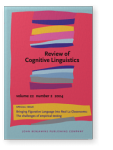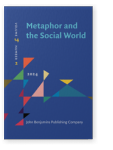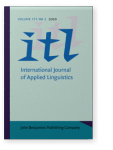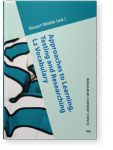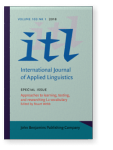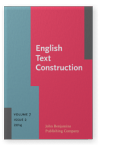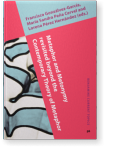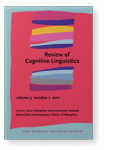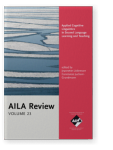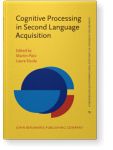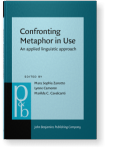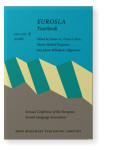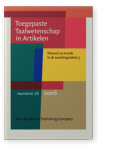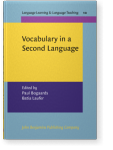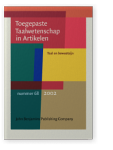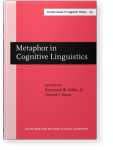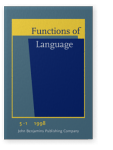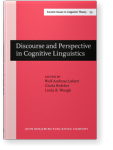Frank Boers
List of John Benjamins publications for which Frank Boers plays a role.
2024 Testing the benefits of relating figurative idioms to their literal underpinnings: The role of individual differences Bringing Figurative Language into Real L2 Classrooms: The challenges of empirical testing, Piquer-Píriz, Ana M. and Reyes Llopis-García (eds.), pp. 309–329 | Article
Second/foreign language (L2) learners appear to remember figurative idioms relatively well if they are informed of the literal underpinning of the expressions, that is, the context in which the expressions were (or still are) used in a literal sense. In the present exploratory study, ESL… read more
2024 Metaphors for multiculturalism in the Canadian context Metaphor and the Social World 14:2, pp. 304–321 | Article
Although Canada is reputed for being a multicultural society, Canadians’ opinions vary regarding the extent to which multiculturalism should be promoted. Examining metaphorical language in discourse about multiculturalism may reveal which metaphors are typically used to endorse it and which ones… read more
2020 Extracting multiword expressions from texts with the aid of online resources: A classroom experiment ITL - International Journal of Applied Linguistics 171:2, pp. 221–252 | Article
This article reports on a classroom intervention where L2 learners were prompted to look for multiword expressions in texts. The participants were two intact classes of Vietnamese learners of English as a foreign language. Over a period of eight weeks, the experimental group (n = 26) looked for… read more
2020 Examining incidental vocabulary acquisition from captioned video: Does test modality matter? Approaches to Learning, Testing and Researching L2 Vocabulary, Webb, Stuart (ed.), pp. 169–191 | Chapter
Previous comparisons of vocabulary uptake from captioned and uncaptioned audio-visual materials have almost consistently furnished evidence in favour of captioned materials. However, it is possible that many such comparative studies gave an advantage to the captioned input conditions by virtue of… read more
2018 Examining incidental vocabulary acquisition from captioned video: Does test modality matter? Approaches to learning, testing, and researching L2 vocabulary, Webb, Stuart (ed.), pp. 169–190 | Article
Previous comparisons of vocabulary uptake from captioned and uncaptioned audio-visual materials have almost consistently furnished evidence in favour of captioned materials. However, it is possible that many such comparative studies gave an advantage to the captioned input conditions by virtue… read more
2014 Looking for form-meaning motivation in new L2 words: A think-aloud study among proficient learners of English English Text Construction 7:2, pp. 249–280 | Article
In a previous, effect-of-instruction study (Deconinck et al. 2010), we reported on the benefits for word learning of an intervention which prompts learners to evaluate the extent to which a novel word’s meaning is congruent with its form. However, that study did not explore the nature of the… read more
2013 Cognitive Semantic ways of teaching figurative phrases: An assessment Metaphor and Metonymy revisited beyond the Contemporary Theory of Metaphor: Recent developments and applications, Gonzálvez-García, Francisco, María Sandra Peña-Cervel and Lorena Pérez-Hernández (eds.), pp. 229–263 | Article
In this article I review studies published between 1996 and 2010 in which the effectiveness of Cognitive-Semantics informed second language pedagogy was put to the test. Altogether, the published evidence is manifestly favourable, although questions remain as to the scope of application of the… read more
2011 Cognitive Semantic ways of teaching figurative phrases: An assessment Metaphor and metonymy revisited beyond the Contemporary Theory of Metaphor: Recent developments and applications, Gonzálvez-García, Francisco, María Sandra Peña-Cervel and Lorena Pérez-Hernández (eds.), pp. 227–261 | Article
In this article I review studies published between 1996 and 2010 in which the effectiveness of Cognitive-Semantics informed second language pedagogy was put to the test. Altogether, the published evidence is manifestly favourable, although questions remain as to the scope of application of the… read more
2010 Helping learners engage with L2 words: The form–meaning fit Applied Cognitive Linguistics in Second Language Learning and Teaching, Littlemore, Jeannette and Constanze Juchem-Grundmann (eds.), pp. 95–114 | Article
The pace at which new words are acquired is influenced by the degree of engagement with them on the part of the learner. Insights from cognitive linguistics into the non-arbitrary aspects of vocabulary can be turned into stimuli for such engagement. The majority of Cognitive Linguists’ proposals… read more
2010 10. A procedure for testing the Noticing Hypothesis in the context of vocabulary acquisition Cognitive Processing in Second Language Acquisition: Inside the learner's mind, Pütz, Martin and Laura Sicola (eds.), pp. 169–197 | Article
2008 3. Adding sound to the picture: Motivating the lexical composition of metaphorical idioms in English, Dutch, and Spanish Confronting Metaphor in Use: An applied linguistic approach, Zanotto, Mara Sophia, Lynne Cameron and Marilda C. Cavalcanti (eds.), pp. 63–78 | Article
2006 Motivating multiword units: Rationale, mnemonic benefits, and cognitive style variables EUROSLA Yearbook: Volume 6 (2006), Foster-Cohen, Susan H., Marta Medved Krajnovic and Jelena Mihaljević Djigunović (eds.), pp. 169–190 | Article
In recent years, many educational linguists have emphasised the importance of drawing language learners’ attention to multiword units (i.e., strong collocations, idioms, etc.), because knowledge of such units is believed to help learners come across as fluent, native-like and accurate L2 speakers.… read more
2004 4. Etymological elaboration as a strategy for learning idioms Vocabulary in a Second Language: Selection, acquisition, and testing, Bogaards, Paul and Batia Laufer (eds.), pp. 53–78 | Chapter
2002 Mentaal Visualiseren Als Leerstrategie: Het belang van taalbewustzijn bij het verwerven van idiomatische uitdrukkingen in een vreemde taal Taal en bewustzijn, pp. 39–48 | Article
This article reports an experiment in which mental imagery was used as a mnemonic strategy to enhance learners' retention of figurative idioms. Language students in tertiary education were provided with on-line exercises on 120 English idioms. Under the experimental condition, participants were… read more
1999 The joy of counting metaphors: Relativity in the socio-economic domain Metaphor in Cognitive Linguistics: Selected papers from the 5th International Cognitive Linguistics Conference, Amsterdam, 1997, Gibbs, Jr., Raymond W. and Gerard J. Steen (eds.), pp. 47–56 | Article
1998 Karen van Hoek. Anaphora and Conceptual Structure Functions of Language 5:1, pp. 128–129 | To be specified
1997 A few Metaphorical Models in (Western) Economic Discourse Discourse and Perspective in Cognitive Linguistics, Liebert, Wolf-Andreas, Gisela Redeker and Linda R. Waugh (eds.), pp. 115–130 | Article
